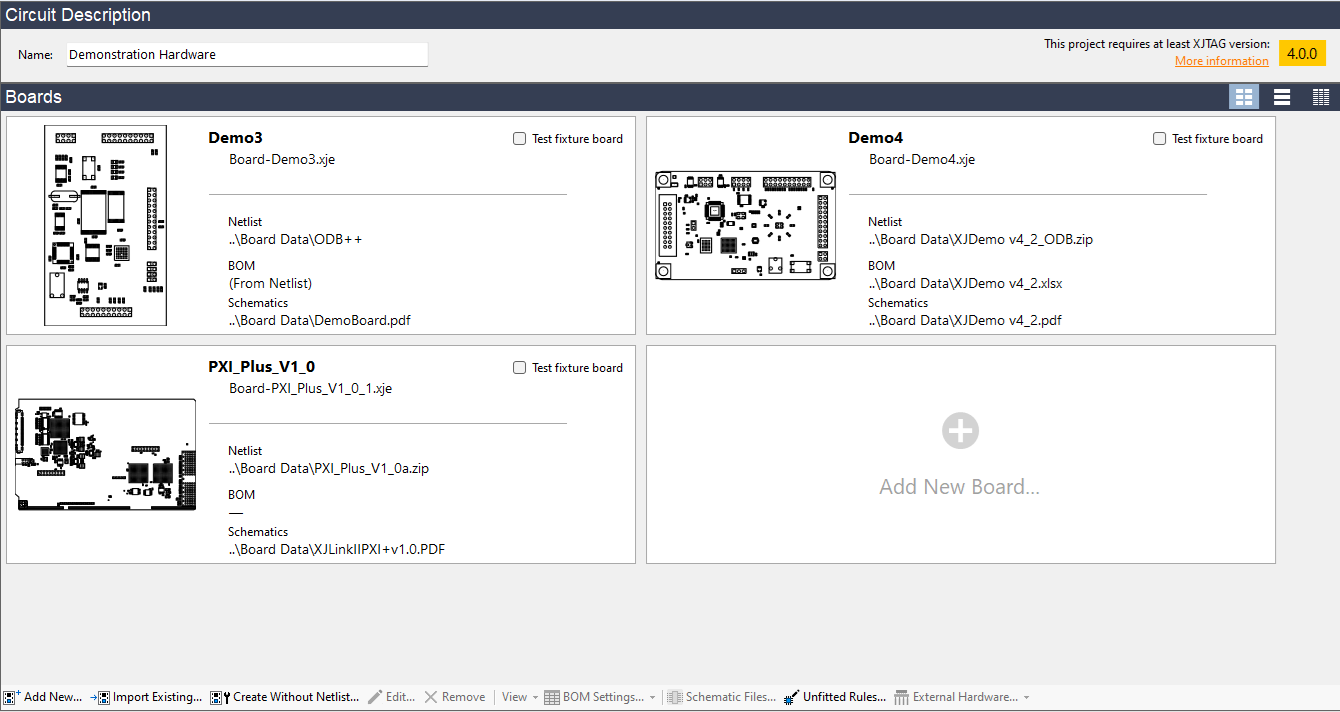Welcome to the XJTAG blog
We believe that sharing our knowledge will help you get the most out of your XJTAG system. This is where our development and support team share their insights and experience. You’ll find posts highlighting particular features of the different software packages that make up the XJTAG development system or aspects of the XJEase language.
Above all this blog is for YOU. We’d love to hear your feedback and suggestions for topics.
Just click the button above and let us know!
New display modes on the Boards Screen
XJDeveloper 4.0 now has a brand new modern look to the Boards screen with 3 possible display modes: Tile mode, Row mode and Grid mode. The new interactive tile and row controls dedicate more screen space to each board so the data can be presented in a clearer, more readable display. […]
Dockable Test Output Tabs in XJRunner
In XJTAG 4.0, you are now able to rearrange the tabs in XJRunner so that you can see output from multiple XJLinks at once. The tabs also display more information about the corresponding XJLink than in previous versions of XJTAG. […]
Setting TCK frequency
In previous versions of XJTAG the JTAG chains in the circuit were all operated at the same frequency. Because the Optimised Scans feature in v4.0 now allows a different frequency to be set for each chain, some changes to the user interface were required, and as a result the chain frequency settings in the user interface have moved in v4.0. [...]
Optimised Scans
Optimised scans is a new feature added to XJTAG 4.0 and it provides a number of improvements aimed at increasing test speed. With Optimised Scans enabled, every JTAG TAP will scan data through at a separate frequency based on the capabilities of the JTAG devices in that TAP group. […]
XJTAG version 4.0 (major release)
A new version of XJTAG – version 4.0 – has been released, containing major updates and new features. It is now available from our website for users who are in maintenance. […]
Extending XJTAG’s Signal Integrity Error Analysis
Continuing from XJTAG 3.12’s Enhanced Signal Integrity Analysis feature (see here and here), XJTAG 3.13 brings more algorithms to help identify potential issues with the JTAG chain. This article describes more of the symptoms it can spot and their likely causes. […]


